Pac-Man Championship Edition DX - Review
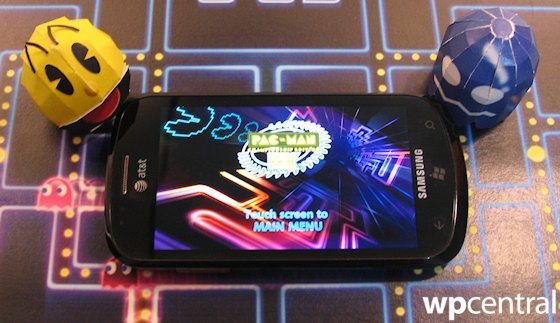
A long time ago, Pac-Man was king of the arcades. If you were a gamer, you were either playing Pac-Man or wishing you were playing it, and you never failed to ask asked your mom to make Pac-Man pancakes in the morning. Over the years, the yellow guy’s popularity has waned despite the occasional (and generally mediocre) sequel.
Fortune turned back in Pac-Man’s favor with 2007’s downloadable console title, Pac-Man Championship Edition. Critics and gamers alike praised CE’s return to classic-style game play and looks. Three years later, Pac-Man Championship Edition DX improved on CE’s foundations, creating the perfect Pac-Man game for the modern era. Now DX comes to Windows Phone with a few less features than the console version but just as much retro modern charm.
Turn a corner, watch out for ghosts, and head past the break for our full review.
Like before, but better
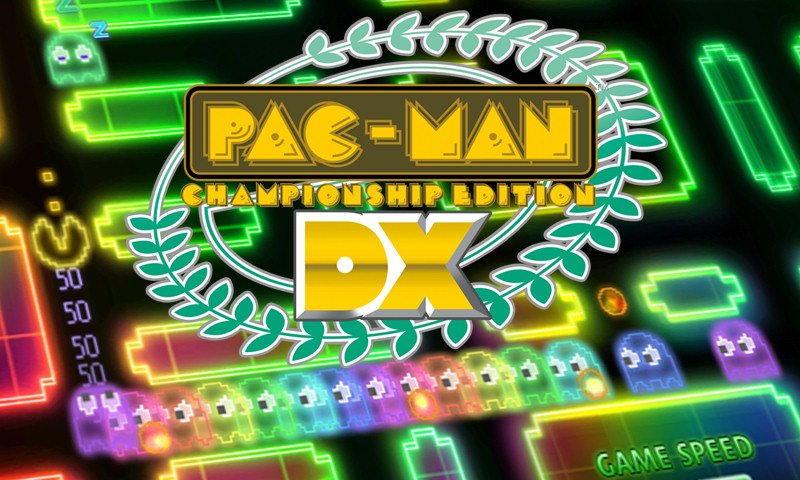
The original Pac-Man used a vertical screen orientation (and didn’t take up the whole screen on Windows Phone), but DX switches to a widescreen format. Pac-Man still eats dots, fruits, power pellets, and ghosts, but the formula has been tweaked a bit. The maze does not start out entirely filled with dots – each of its sides contains a smaller matching set. Eat all of the dots on either side and a fruit appears on the opposite side. Chomping the fruit triggers the formation of a new, different pattern of dots. The game goes back and forth like that, with new paths constantly being created as Pac-Man clears sides of the screen. Instead of going on forever, though, each of DX’s game play modes is timed. It’s all about getting as many points as possible while you can by finding the best paths between the dots.
Ghost trouble
The ghosts remain as determined as ever to stop Pac-Man from completing his mission. However, their numbers have greatly increased. As each set of dots appears, so do one or more sleeping ghosts. Pass by them and they wake up and give chase. Instead of wandering randomly, these sleepers line up behind Pac-Man and are generally easy to avoid since they’re behind him. The train of ghosts gets larger and larger as the game goes on, often consisting of 20 or more ghosts. Occasionally a ghost that follows its own AI patterns instead of Pac-Man’s movements spawns from the center of the maze as well. When the yellow hero finally eats a power pellet, the player can take the ghosts down for huge points. Some ghosts even carry power pellets inside, making it possible to keep the ghost chain going if you like. A handy on-screen meter makes it easier to judge when a power pellet is going to wind down, too.
Maze madness
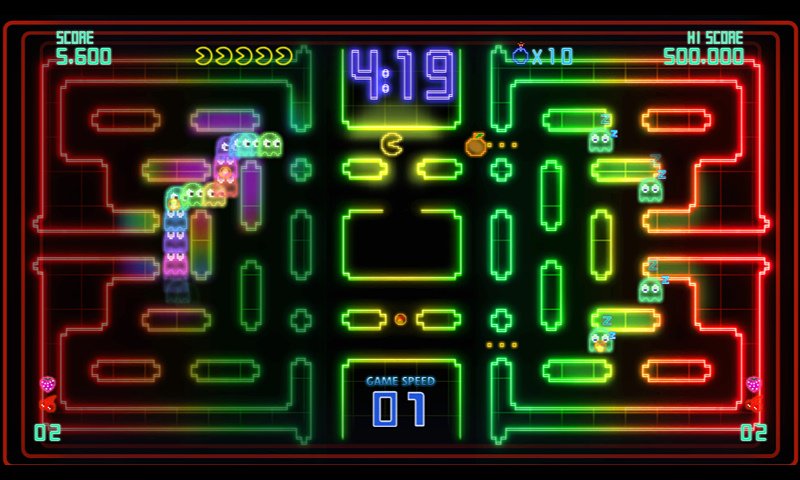
Players can select from three different courses: Championship II, Manhattan, and Dungeon, as well as a tutorial maze that’s annoyingly highlighted by default. The following modes are available on each course:
- Score Attack: The main game mode, which comes in 3-minute and 5-minute varieties. The goal is to score as many points as possible by eating as many dots, fruits, and ghosts as possible within the time limit. Players have unlimited lives, but dying reduces the game speed and score multiplier to zero.
- Ghost Combo: The only goal here is to eat as many ghosts as possible in a single chain combo. The player can quit at any time after ending the combo.
- Time Attack: Instead of playing for score, Time Attacks are about finishing a maze in the least possible time, so eating ghosts is not important. Players have limited time and lives to collect a certain number of fruits in each challenge. Each course has several shorter Time Attacks and a longer challenge that combines all the shorter ones.
Difficulty
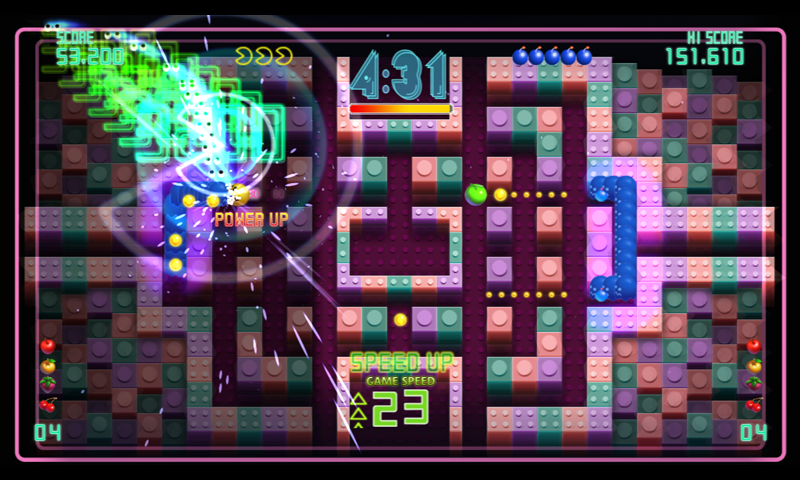
The first Windows Phone Pac-Man game (review) was way too difficult for a couple of reasons: the core original arcade game is just hard, requiring serious pattern memorization in order to succeed; and the touch-screen swiping controls just couldn’t turn Pac-Man as fast as the arcade game required in order to follow patterns and avoid the ghosts. DX is a huge improvement in both regards. Players don’t have to memorize and execute complicated patterns to win. The best path to follow is usually obvious from the pattern of dots on-screen. The ghosts are also far less aggressive than before. If they do manage to get close, the game even goes into slow motion until the player escapes or gets eaten.
All the latest news, reviews, and guides for Windows and Xbox diehards.
Pac-Man can now avoid death with the new bomb attack that knocks all ghosts into the center of the maze. Bombs should be used as a last resort since they decrease the game speed and score multiplier, though not as much as dying. A reverse pinching motion (as if one was zooming in) launches bombs. I’ve never been a fan of touch-screen pinches, but bombs almost always work here. Should the motion ever fail, the game would be in slow-motion by that point anyway, giving the player another chance to try it.
What about general movement and turning corners? I’m super happy to report that DX’s touch-screen movement is dramatically better than the original’s. There is no virtual stick – you just swipe anywhere on screen to turn. The game almost never misinterpreted my swipes. Just like the original, players can buffer a turn by swiping in the direction of the turn before Pac-Man reaches a corner; a spark trail now indicates a turn has been buffered. Turning corners rapidly is still a little more challenging than it would be with a physical controller, but these are still some of the best touch-screen controls I’ve experienced.
Three classic looks
A huge part of the Pac-Man’s continued pop culture success is the iconic appearance of Pac-man and his nemesis ghosts. Pac-Man CE DX doesn’t mess too much with a good thing. The game features three different visual styles for its characters. Type A’s characters are made up of blocky pixels. The look is seemingly inspired by the awful Atari 2600 Pac-Man, though it’s not the same. Type B’s characters look just like the arcade originals except that they are now composed of neon outlines. Type C is borrowed from the isometric arcade sequel Pac-Mania. That’s the one in which Pac-Man and the ghosts looked semi-3D and the mazes were made of Lego bricks. It’s cool to experience Pac-Mania’s visuals without that game’s awkward perspective and slow game play. Each of the character visuals has its own matching background visuals and music, all of which can be mixed and matched for variety.
Achievements
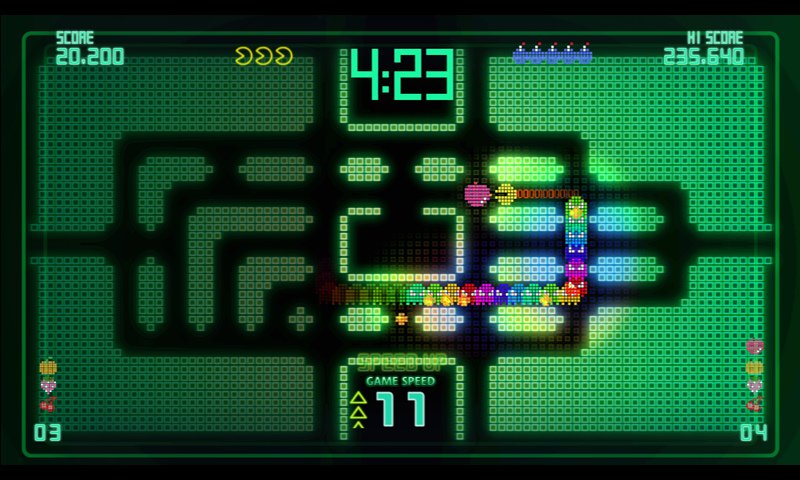
DX’s Achievements are orders of magnitude easier than the first game’s. They mostly revolve around doing well in the Score Attack modes. It’s quite possible to earn all of the Achievements just by mastering the various modes on a single maze – I would have liked the Achievements to encourage playing every mode on all three stages, but that would of course make going after them much more time consuming.
Only two Achievements gave me trouble: 750,000 Points and Big eater. The former requires players to finish the 5-minute Score Attack with 750,000 points. It’s entirely possible to finish with far less points, so learning the best routes to the dots is necessary. I finally got it after watching a YouTube score run. As for Big eater, the description simply states “Eat 100 ghosts.” But the only way to earn it is to get a combo of 100 or greater in Ghost Combo. Apparently the developers plan to make it a cumulative Achievement in a future update. The game doesn’t really teach players how Ghost Combo is meant to be played, but after a quick YouTube viewing I had the method down pat.
Gone with the wind
As great as the Windows Phone version of DX is, it’s missing a significant amount of the console version’s content. The loss of several visual styles and background music tunes is probably not a big deal. Also gone is the Free mode in which players could tweak the game rules, enabling unlimited bombs or adjusting the number of ghosts in play.
More egregious is the number of mazes that were cut. The mobile version only has three of the console’s 9 courses. Gamers can still get plenty of play time out of the included courses, but there really was no reason to leave out the others. It’s not like the game’s file size is that huge.
Overall Impression
If the Windows Phone version of Pac-Man Championship Edition DX had all 9 of the console game’s mazes, I would rate it a 10 and recommend it unconditionally. It’s just a little hard to overlook the cut content, especially given the game’s $6.99 price tag. But DX is a game that any Pac-Man fan will thoroughly enjoy and a huge improvement over the previous mobile version. The graphics, sound, controls, and difficulty are all just about perfect. Whether you buy it now or wait for a sale, Pac-Man CE DX is a title that any mobile gamer should own.
Pac-Man Championship Edition DX costs $6.99 and has a free trial. Don’t let the ghosts stop you from getting it here at the Windows Phone Store.

Paul Acevedo was formerly a Games Editor at Windows Central. A lifelong gamer, he has written about videogames for over 15 years and reviewed over 350 games for our site. Follow him on Twitter @PaulRAcevedo. Don’t hate. Appreciate!
